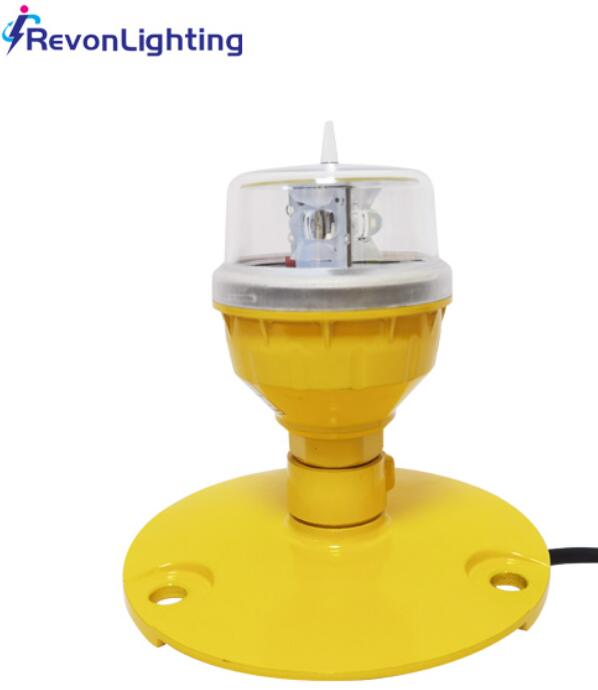Helipad lights play a crucial role in ensuring the safe operation of helicopters, especially during nighttime landings, poor weather conditions, or emergency situations. Their functionality extends beyond basic illumination, acting as critical navigation aids for pilots and a beacon of safety for ground crews. With advancements in lighting technology, modern helipad lights offer enhanced performance and reliability, making them indispensable for hospitals, offshore platforms, skyscrapers, and private airstrips.
Why Are Helipad Lights Essential?
The importance of helipad lights cannot be overstated. Helicopter landings demand precision, as pilots often operate in confined spaces with limited visibility. Helipad lights:
Enhance Visibility:
They improve the visibility of the landing zone, ensuring that pilots can identify the helipad from a distance and align their approach accurately.

Provide Navigation Guidance:
By marking the perimeter and key areas of the helipad, these lights help pilots maintain proper orientation during landing and takeoff.
Ensure Safety:
Helipad lights reduce the risk of accidents by illuminating obstacles, guiding emergency landings, and supporting operations in adverse weather conditions.
Meet Regulatory Standards:
Many aviation authorities mandate the use of compliant helipad lighting systems to ensure the safety and efficiency of helicopter operations.
| Helipad lights |
| Helipad light |
Types of Helipad Lights
Modern helipad lighting systems comprise various types of lights, each serving a specific purpose:
Perimeter Lights:
These lights outline the boundary of the helipad, making it easily identifiable from the air. They are typically installed in a circular or square pattern around the landing zone.
Floodlights:
Positioned to illuminate the entire helipad surface, floodlights ensure clear visibility for pilots and ground personnel.
Beacon Lights:
Installed at elevated positions, beacon lights help helicopters locate the helipad from greater distances, especially in low-light or low-visibility conditions.
Approach Lighting Systems (ALS):
These lights guide helicopters during their final approach, providing a clear path to the helipad.
Obstacle Lights:
Placed on surrounding structures, these lights warn pilots of potential hazards, such as antennas or tall buildings.
Key Features of Modern Helipad Lights
Today’s helipad lights incorporate advanced technologies that enhance their functionality and reliability. Some notable features include:
LED Technology:
LED lights are energy-efficient, long-lasting, and provide consistent brightness, making them ideal for helipad lighting.
Solar-Powered Options:
Solar helipad lights eliminate the need for complex wiring, making them a cost-effective solution for remote or temporary installations.
Weather Resistance:
Designed to withstand extreme temperatures, heavy rain, and strong winds, modern helipad lights ensure uninterrupted performance in harsh environments.
Remote Control and Monitoring:
Advanced systems allow operators to control light intensity, switch modes, and monitor functionality remotely, enhancing operational convenience.
Compliance with ICAO Standards:
Many helipad lighting systems meet the International Civil Aviation Organization (ICAO) standards, ensuring global safety compliance.
Applications of Helipad Lights
Helipad lights are versatile and find applications in various settings:
Hospital Helipads:
Ensuring rapid and safe landings for medical helicopters during emergencies.
Offshore Platforms:
Supporting helicopter operations on oil rigs and marine vessels.
Urban Rooftops:
Providing safe landing zones for helicopters in densely populated cities.
Private Properties:
Enhancing the functionality and safety of private helipads.
Choosing the Right Helipad Lights
Selecting the right helipad lights requires careful consideration of specific needs and operational conditions. Here are some factors to keep in mind:
Location:
Evaluate whether the helipad is in a rural, urban, or offshore setting to determine the type of lights required.
Operational Hours:
For nighttime or 24-hour operations, opt for systems with high-intensity illumination and backup power options.
Weather Conditions:
Choose lights with robust weatherproofing for areas prone to extreme climates.
Regulatory Compliance:
Ensure the lighting system meets local and international aviation standards.
Energy Source:
For remote locations, consider solar-powered systems to reduce dependence on external power supplies.
Maintenance and Upkeep
To ensure the longevity and reliability of helipad lights, regular maintenance is essential:
Routine Inspections:
Check for damaged components, dirt, or moisture that may affect performance.
Cleaning:
Keep lights free from debris and ensure lenses remain clear for optimal brightness.
Battery Checks:
For solar systems, monitor battery health and replace when necessary.
Software Updates:
Update control systems and software to take advantage of new features and improvements.
Future Trends in Helipad Lighting
The evolution of lighting technology continues to impact helipad lights, with exciting trends on the horizon:
Smart Lighting Systems:
Integration with IoT and AI for automated control and real-time diagnostics.
Enhanced Energy Efficiency:
Innovations in solar and LED technologies promise even lower power consumption and longer lifespans.
Portable Helipad Lights:
Lightweight and modular designs for quick deployment in emergency or temporary settings.
Advanced Customization:
Tailored lighting solutions for unique helipad designs and operational needs.
Helipad lights are more than just functional tools; they are a critical component of aviation safety and efficiency. By investing in high-quality, compliant lighting systems, helipad operators can ensure safe and precise helicopter landings in any condition. With technological advancements paving the way for smarter and more sustainable solutions, the future of helipad lights looks brighter than ever.